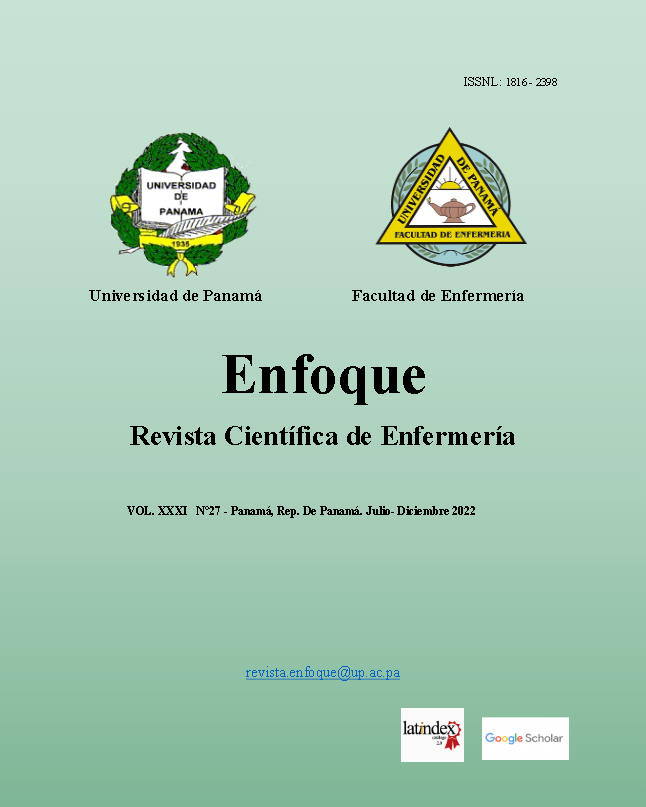References
Banco Mundial (The World Bank) (2006). Reduciendo la vulnerabilidad al VIH/SIDA en Centro América. HIV/AIDS in Central America: Epidemic and Priorities for STD Prevention). Región de Latino América y el Caribe, Programa Global VIH/SIDA, diciembre 2006. Banco Mundial. http://web.worldbank.org/archive/website01012/WEB/IMAGES/CAHIV-12.PDF
Cáceres, C.F. (2004). Intervenciones para la prevención del VIH en América Latina y Caribe: una revisión de la experiencia regional. Cad. Saúde Pública, 20(6), 1468-1485. Revista Scielo Salud Pública. https://www.scielosp.org/article/csp/2004.v20n6/1468-1485/
Castro, H. F., De León, R. G., Álvarez, A., & González, I. (2014). Grupos étnicos y el VIH/SIDA en Panamá. Informe de Análisis secundario de ENASSER 2009. USAID from the american people. https://pdf.usaid.gov/pdf_docs/pa00k3w4.pdf
CDC (2021). El SIDA y las infecciones oportunistas | Vivir con el VIH | Información básica | VIH | CDC. (2021, 7 abril). Centro para el Control y la Prevención de Enfermedades. Centro del Control de Enfermedades. https://www.cdc.gov/hiv/spanish/basics/livingwithhiv/opportunisticinfections.html
Contraloría General de la República, Instituto Nacional de Estadística y Censo (INEC) (2021). Estimaciones y Proyecciones de Población total de la República, por Provincia, comarca indígena, distrito y corregimiento, según Sexo y Edad: al 1 de julio de 2010-20. Instituto Nacional de Estadística y Censo-Panamá. https://www.inec.gob.pa/publicaciones/Default3.aspx?ID_PUBLICACION=556&ID_CATEGORIA=3&ID_SUBCATEGORIA=10
Instituto Nacional de Estadística y Censo-Panamá. (2021). Panamá en Cifras 2011-2015. Instituto Nacional de Estadística y Censo-Panamá. https://www.inec.gob.pa/publicaciones/Default2.aspx?ID_CATEGORIA=17&ID_SUBCATEGORIA=45
Estrada M, J. H. (2009). La infección por VIH/sida entre hombres que tiene sexo con hombres (HSH) en América Latina. Revista Facultad Nacional De Salud Pública, 22(1). https://revistas.udea.edu.co/index.php/fnsp/article/view/712
González Bernal., G. (2019). Proyecto de capacitación en las normas nacionales del programa de tuberculosis, dirigido a enfermeros de la región de salud de panamá este. Mayo - septiembre 2018. Enfoque. Revista Científica De Enfermería, 25(21), 46-62. https://www.revistas.up.ac.pa/index.php/enfoque/article/view/2148
Glosario del VIH/SIDA | NIH. (2021). Clinical Info HIV.gov. https://clinicalinfo.hiv.gov/es/glossary
Mitchell, C. (2020). Países de América Latina y el Caribe se comprometen a reducir un 75% las nuevas infecciones por VIH en adultos y jóvenes para 2020. Pan American Health Organization / World Health Organization. https://www3.paho.org/hq/index.php?option=com_content&view=article&id=11155:paises-se-comprometen-reducir-75-nuevas-infecciones&Itemid=1926&lang=es
Organización Mundial de la Salud. (2021). 10 datos sobre el VIH/SIDA. OMS: VIH/SIDA. Organización Mundial de la Salud. https://www.who.int/es/news-room/facts-in-pictures/detail/hiv-aids
ONUSIDA. (2021). ONUSIDA- Últimas estadísticas sobre el estado de la epidemia de SIDA. Organización Mundial de la Salud. https://www.unaids.org/es/resources/fact-sheet
Sánchez, J. E. (2021, 30 junio). VIH, pandemia por generaciones. Noticias Caja de Seguro Social. https://prensa.css.gob.pa/2021/06/30/vih-pandemia-por-generaciones/
Teva, Inmaculada, Bermúdez, Mª Paz, Ramiro, M Teresa, & Buela-Casal, Gualberto. (2012). Current epidemiological situation of HIV/AIDS in Latin America: Analysis of differences among countries. Revista médica de Chile, 140(1), 50-58. https://dx.doi.org/10.4067/S0034-98872012000100007

